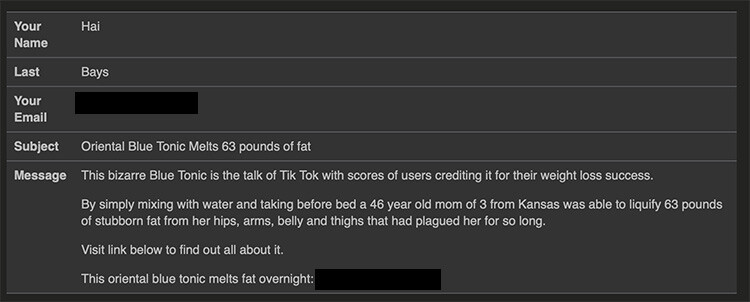Bot and spam form submissions have become a prevalent issue for website owners. Often inundating forms with spam and irrelevant content. Understanding what bot form submissions are, their intentions, and how to mitigate them is crucial for maintaining the integrity of your website and data. In this comprehensive guide, we’ll delve into the world of bot form submissions. Providing insights into their nature, potential threats, and effective strategies to combat them.
What Are Spam and Bot Form Submissions?
Bot form submissions, also known as spam form submissions, encompass a range of automated interactions. These include online forms, contact forms, comment sections, and registration forms. These submissions are generated by bots rather than human users. They are typically aimed at flooding websites with spammy or malicious content.

Intentions Behind Spam and Bot Form Submissions:
The motivations driving bot form submissions vary, but they often include:
- Spamming: Bots may flood forms with irrelevant messages, advertisements, or links to boost traffic to specific websites.
- Data Harvesting: Bots may attempt to harvest personal information or email addresses from forms for use in phishing schemes or identity theft.
- SEO Manipulation: Some bots submit form submissions to insert backlinks or keywords into websites, aiming to manipulate search engine rankings.
- Security Exploitation: Malicious bots may exploit vulnerabilities in websites to gain unauthorized access, inject malware, or execute malicious scripts.
Should You Be Concerned?
While bot form submissions are a nuisance for website owners, they may also pose significant threats to website security, user privacy, and online reputation. Ignoring bot submissions can lead to compromised website integrity, reduced user trust, and potential legal ramifications. Therefore, website owners should be vigilant and proactive in addressing bot form submissions to safeguard their online presence.

Effective Strategies to Combat These Submissions
Combatting bot form submissions requires a multi-faceted approach that combines technological solutions with proactive monitoring and management. Here are some effective strategies to consider:
- Implement CAPTCHA or reCAPTCHA: Adding CAPTCHA or reCAPTCHA challenges to forms can effectively differentiate between human users and bots, thwarting automated submissions.
- Utilize Honeypot Fields: Honeypot fields, hidden from human users but visible to bots, can help detect and block automated form submissions.
- Enable Form Validation: Implement form validation techniques to ensure that submissions meet specific criteria, such as valid email addresses or phone numbers.
- Monitor Form Analytics: Regularly review form submissions and analytics to detect patterns of suspicious activity, such as a sudden influx of submissions from specific IP addresses.
- Utilize Web Application Firewalls (WAFs): Deploying WAFs can provide an additional layer of protection against bot-driven attacks by filtering malicious traffic before it reaches your website.

Spam and Bot Form Submission Final Note
Bot form submissions pose a significant threat to website integrity, user privacy, and online reputation. By understanding the nature of bot form submissions, their intentions, and implementing effective mitigation strategies, website owners can protect their websites from spam, data breaches, and other security threats. Stay vigilant and implement proactive measures. Regularly monitor your website to ensure a safe and secure online environment for your users.
What do we use to protect against Spam and Bot Form Submissions? Learn more about security below:
To learn more about Qi Graphic Design’s website design services, click below:


0 Comments